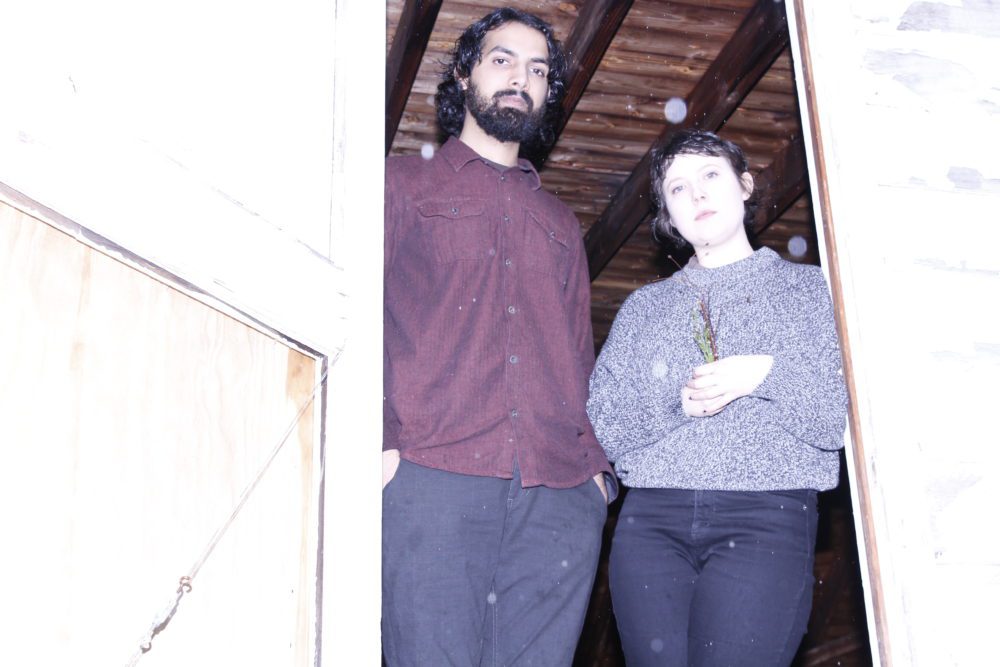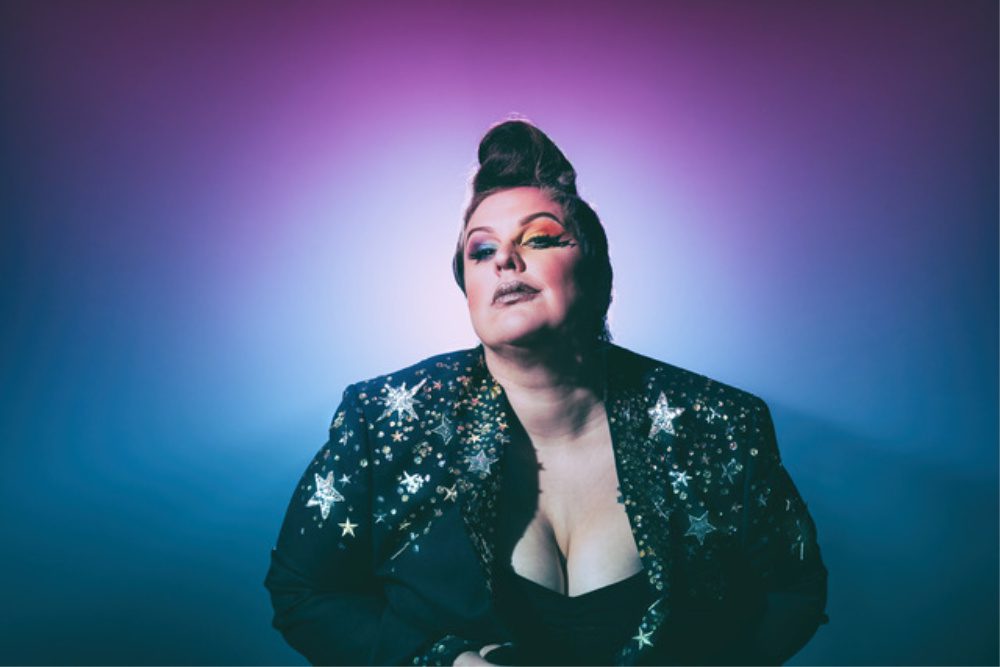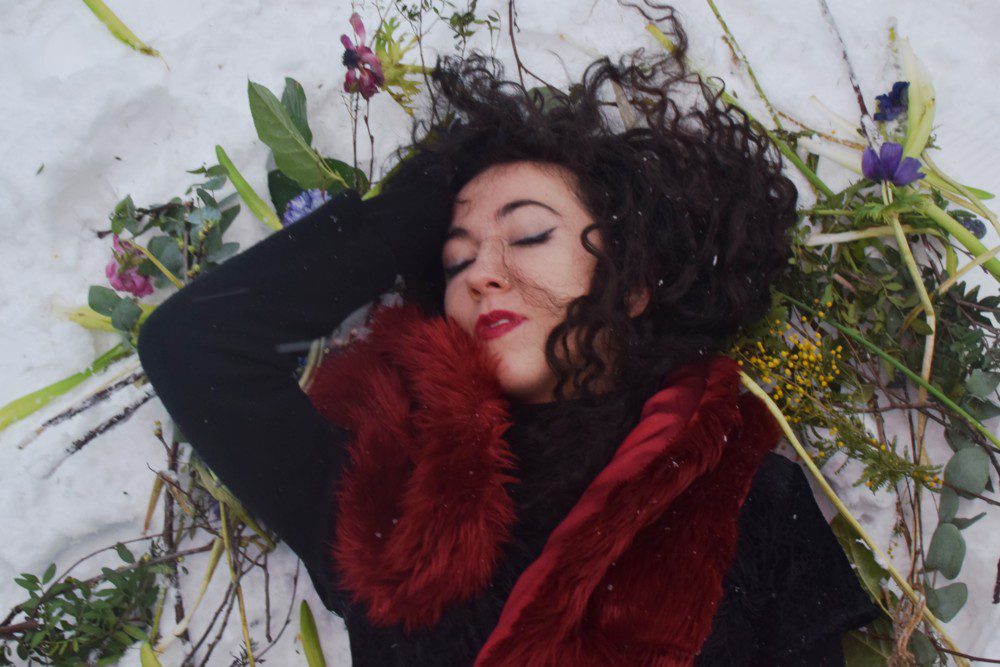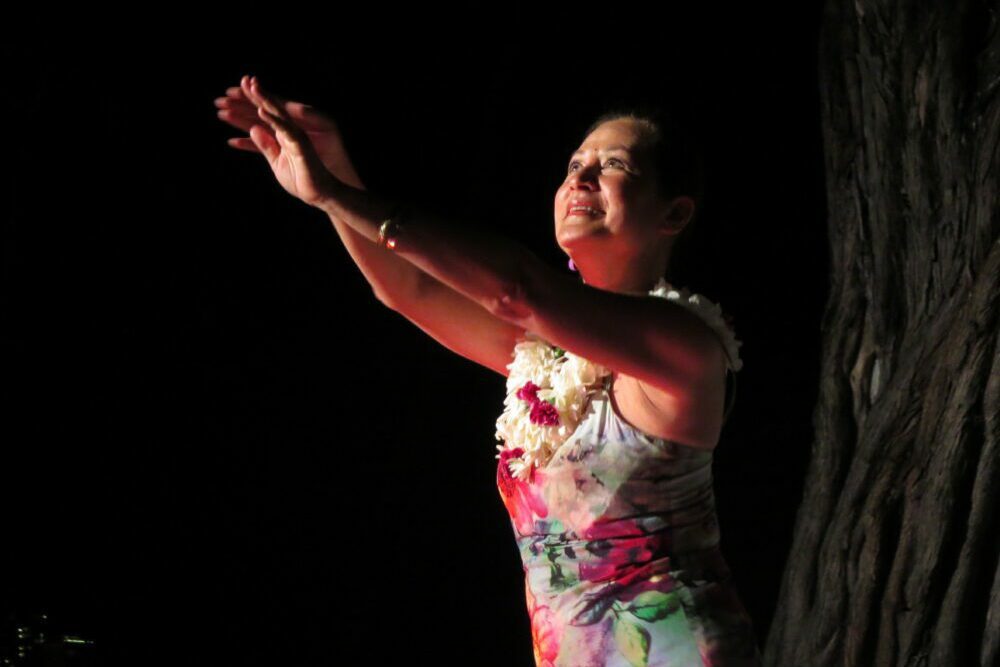
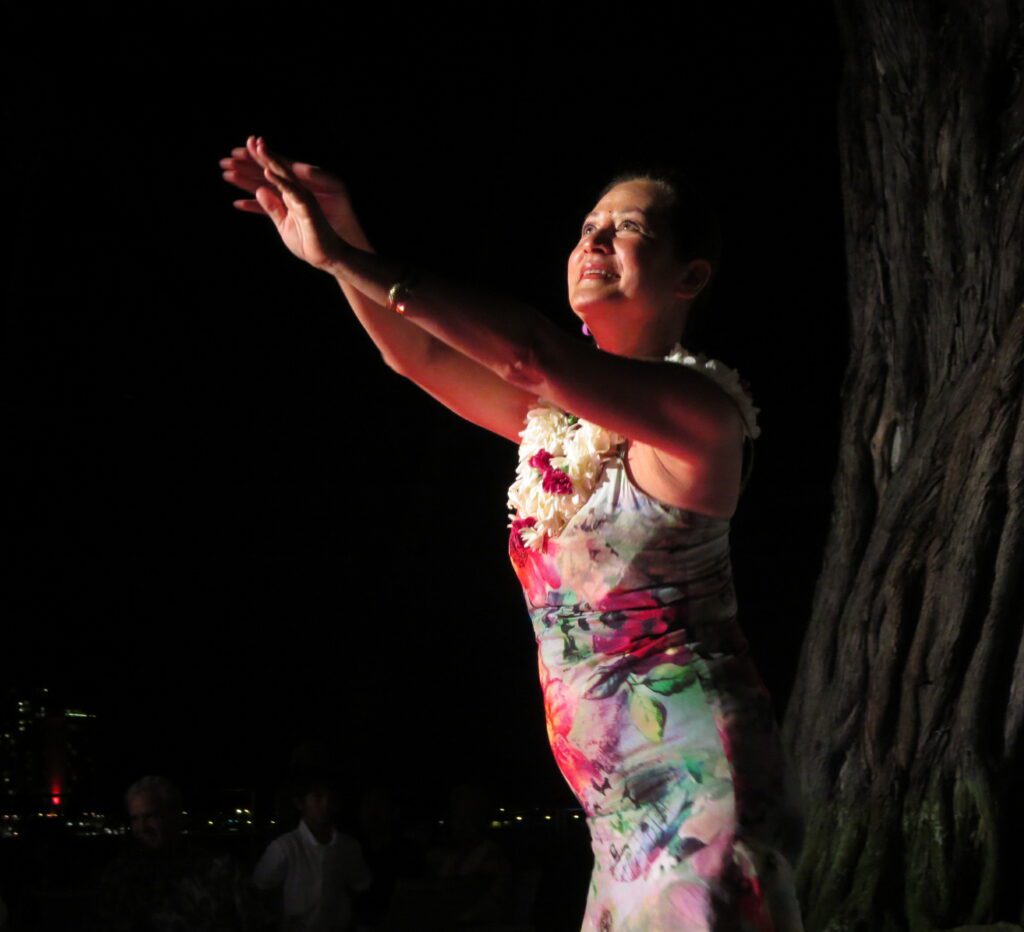
Growing up, Kanoelehua Kaumeheiwa often felt embarrassed by her Hawaiian first name. Even then, Hawaii was a very multi-cultural place (she herself was of Hawaiian, Chinese, and German heritage) and though her fellow students had last names like Kahale, Fukushima, or Chung, their first names were all Westernized — Stephanie, Myron, Dave, Mary. “Every time the teacher would call roll, she’d struggle over my name,” she says. “Every grade, every class, even through high school, they struggled to pronounce my name. So much so that, whenever she was calling roll and it got to the K’s and you could see the teacher stop, the whole class would go, ‘Oh, she’s here!’”
Kanoe can smile about it now, but at the time she felt differently. “That always made me ashamed because it singled me out,” she explains. “I was shy. This was 1960, before awareness of ethnicity, ethnic pride. And I thought about changing my name. And of course, when I told that to my parents, especially my father, who was Hawaiian, he became very, very angry. And he said, ‘You need to be proud of who you are. And there’s only one person with your name, so you have to be proud of it.’ So as I got older and I started modeling and running in beauty pageants, he was right. I was the only one with that name. So it was memorable. And then I had pride in it.”
It’s a pride that Kanoe evinces every time she takes the stage to dance hula. She’s been dubbed the most photographed hula dancer in the world, with her image appearing in publications around the globe, innumerable performances available on the internet (here’s a favorite of mine), and a devoted fan base that watches her dance at House Without a Key, a restaurant at the Waikiki’s chic Halekulani hotel, where she’s danced for over forty years.
Yet she hadn’t started out with the dream of becoming a world-renowned hula dancer. “My mother forced me to take lessons,” she laughs. “I didn’t want it. I wanted to take tap. But she said, ‘You have to go because it’s a summer special, and I can put you and your two sisters in there for $12 a month.’ This is in 1966, ’67. But I ended up liking it. And I feel like I learned that I have the soul of a dancer. Because dancers love discipline, they like music, and they like to express. Hula gave me all of that.”
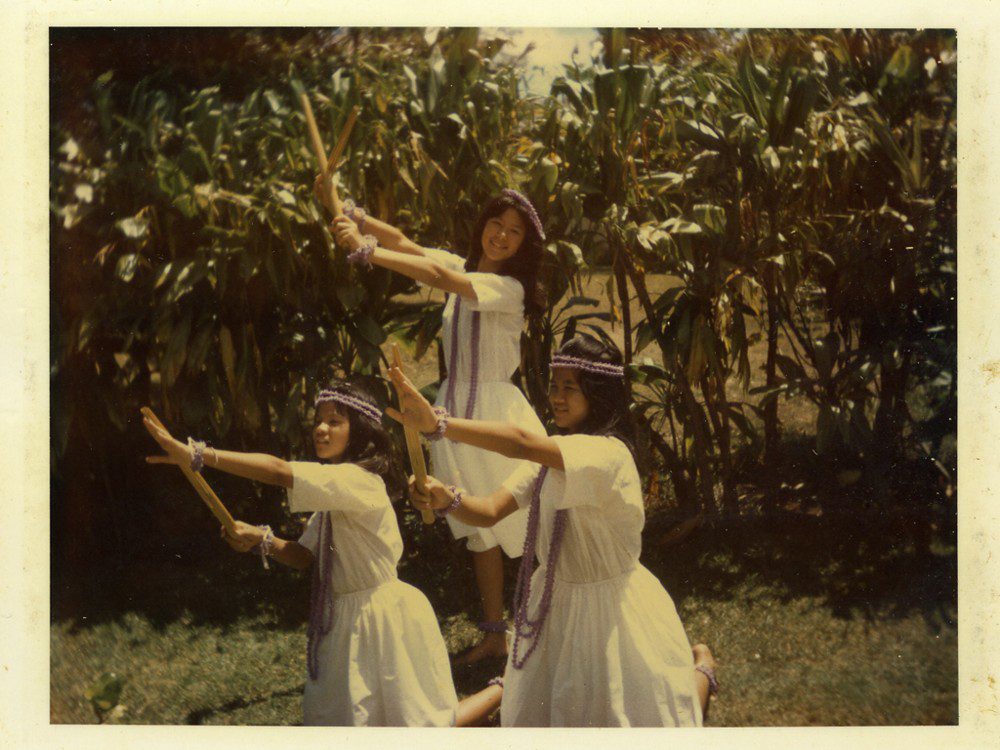
But when Kanoe began doing modeling work as a teenager, her instructor, Ma‘iki Aiu Lake, sensed her attention was wandering. “I would come to class in a not correct attitude,” she says. “I would come to class with makeup, lipstick, dressy go-go boots, fishnet stockings — I just wasn’t right. So she scolded me and asked me to leave.” Kanoe didn’t stay away too long, drawn back when she decided to run for Miss Hawaii in 1973 and needed a talent for the competition. “I had to go back and ask Ma‘iki if I could do a particular hula which was written for her. That’s the right way to do it; you have to ask permission. So I asked, and she gave it to me. And winning Miss Hawaii put me on the track of sort being in two worlds. I was modeling, but I was also dancing — one foot in the whole modeling fashion scene, and another foot in the Hawaiian cultural scene, which was unusual. Most people either did one or the other.”
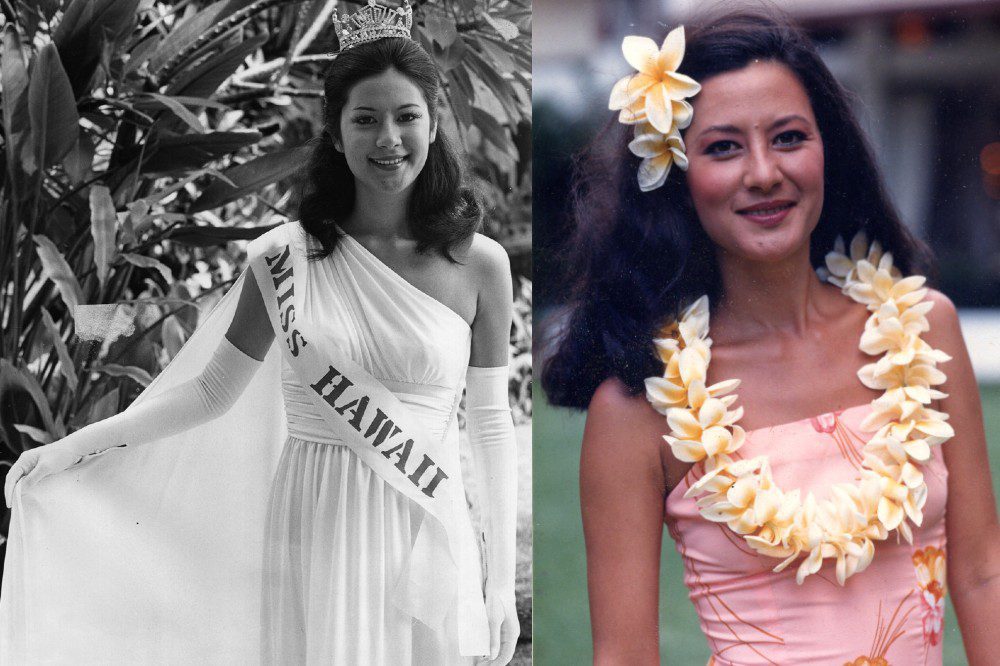
It was a heady time to bridge those two worlds. The 1970s saw a rebirth and renewal of Hawaiian culture that came to be called the Hawaiian Renaissance, a time of reclaiming traditions that had been lost through years of repression. When the first missionaries arrived in the islands in the 1820s, they banned hula dancing, among other restrictions. King Kalakaua, the “Merrie Monarch” who ruled from 1874 to 1891, brought back Hawaiian dance (the annual Merrie Monarch Festival is dedicated to him). But following his death, and the annexation of the islands to the United States after the Hawaiian monarchy was overthrown in 1893, repression of Hawaiian culture returned. By the time Hawaii became a state in 1959, children were admonished if they spoke Hawaiian at school.
“The Hawaiian language had almost died,” says Kanoe. “Hawaiian music had almost died. When you walked through Waikiki, the whole Hawaiian traditional thing was not heard very much. It wasn’t ‘in’ and it wasn’t cool.” The Hawaiian Renaissance was about changing all that. “Everybody was finding their Hawaiian roots,” Kanoe explains. “People who maybe didn’t come out initially to say, ‘I’m Hawaiian’ or be proud of who they were, now came out. And if they had middle names that were Hawaiian, now they called themselves by their middle name.” Ironically, after Kanoe married her husband John Miller, she was now sometimes asked why she hadn’t kept her Hawaiian last name. “And by then I been married for, what, fifteen years?” she recalls of one such conversation. “And I said, ‘You know what? I’m proud to be his wife, and I’m proud to be Miller. So I’ll just keep it as Miller.’”
Following her year as Miss Hawaii, hula took Kanoe’s career in an unexpected direction. In 1976, she was asked to fill in at House Without a Key for a dancer who was sick. She quickly became a regular substitute; while other dancers came and went, Kanoe was always available. “It was something of a throwaway job,” she says. “Nobody really wanted it. It was very unglamorous. At the time, in the ’70s, the big shows were happening, really wonderful big shows, Polynesian revues, and there was a lot of work for dancers; if you could do Tahitian and Maori and Samoan dances, you had a job.” But hula was Kanoe’s specialty, and in 1977 she was hired to dance one night a week at House Without a Key, eventually expanding to six (today she dances every Saturday and every other Friday).
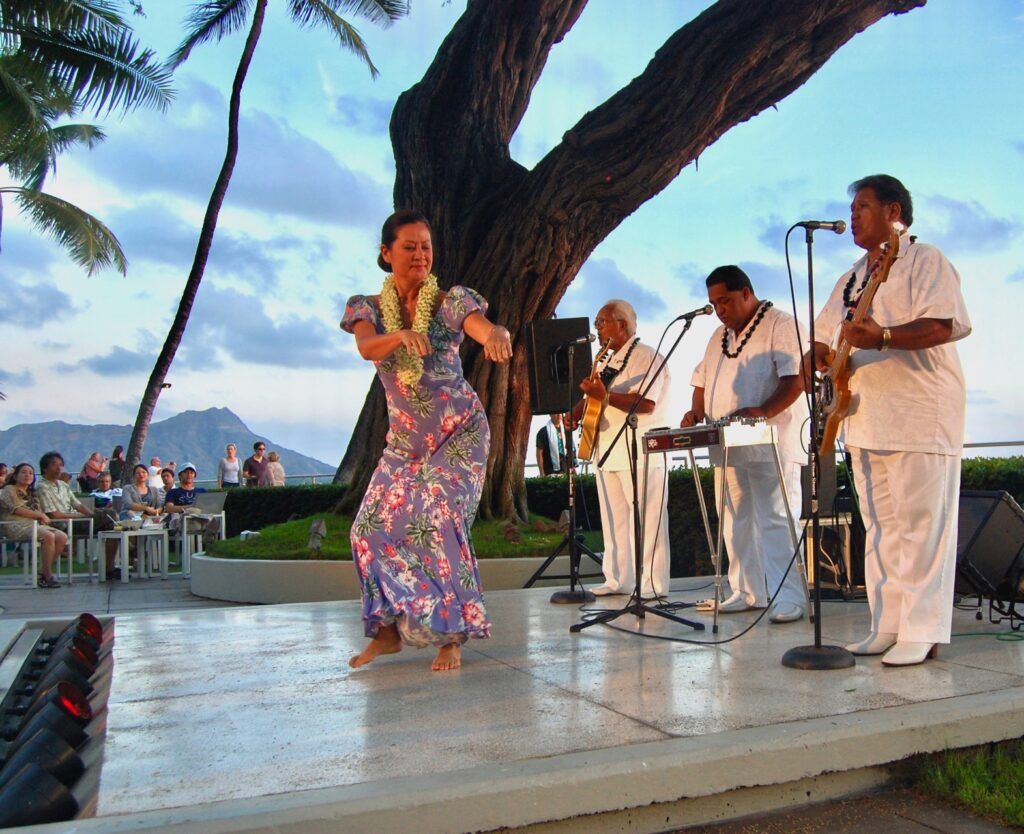
“I loved it because it just fit me,” she says. She loved dancing to the rich palate of music the three-piece bands would perform: songs from the last days of the Hawaiian kingdom; the hapa haole tunes (Hawaiian songs with English lyrics) of the 1930s, “that Royal Hawaiian Hotel kind of period — ‘Lovely Hula Hands,’ ‘Dancing Under the Stars,’ ‘I’ll Weave a Lei of Stars for You’ — that romantic hapa haole, very lyrical, beautiful, descriptive of the natural beauty of Hawaii”; contemporary songs, “very slack key, earthy, folksy music, the kind of music you would hear on someone’s back porch.” And she had an admitted fondness for “cheesy stuff, like ‘Hawaiian Vamp’ — I love to put on that cellophane skirt and dance around.”
But hula is not just mere entertainment. It’s an art form, a means of communication, and a way of preserving history. Before a written Hawaiian language was developed, the Hawaiian people recorded their history through recitation and dance. In hula, the movements all mean something — those “lovely hula hands” are telling a story. “Hula expresses who we are as a people, as a culture,” Kanoe explains. “I have had really good training and I had the best teacher, who was very into the culture, and expressing hula from inside out. Not just thinking about hula like, ‘How’s my hair and makeup, how’s my hands?’ No. It’s more like, ‘Where am I inside?’ I study the words, study the meaning, study the backstory and the history of the song. Then I can come here and dance it. If you don’t know what the song is about, you haven’t done your homework. That’s the way my teacher used to make me think.”
Though she occasionally danced at private events, she found them unfulfilling; at such shows, she really was just part of the background entertainment. “So it struck me, like, ‘Where are you appreciated, Kanoe? You’re appreciated at the Halekulani.’ And so I stopped taking those other gigs. At Halekulani, I feel like I’m doing something more important than just being somebody on the stage at a corporate event. And over the years, I began to think of it almost like my home, kind of like an extension of what I grew up with. I was raised in a very Hawaiian house; you come inside, you take off your shoes, you leave all your anxiety outside, and then my father would pull out his ukulele and my brother his guitar, and we would all start singing and playing. Our back porch became a place friends came to gather. And when I’m on stage at Halekulani, I feel like I’m at home — the audience are like my guests, they’re not strangers.”
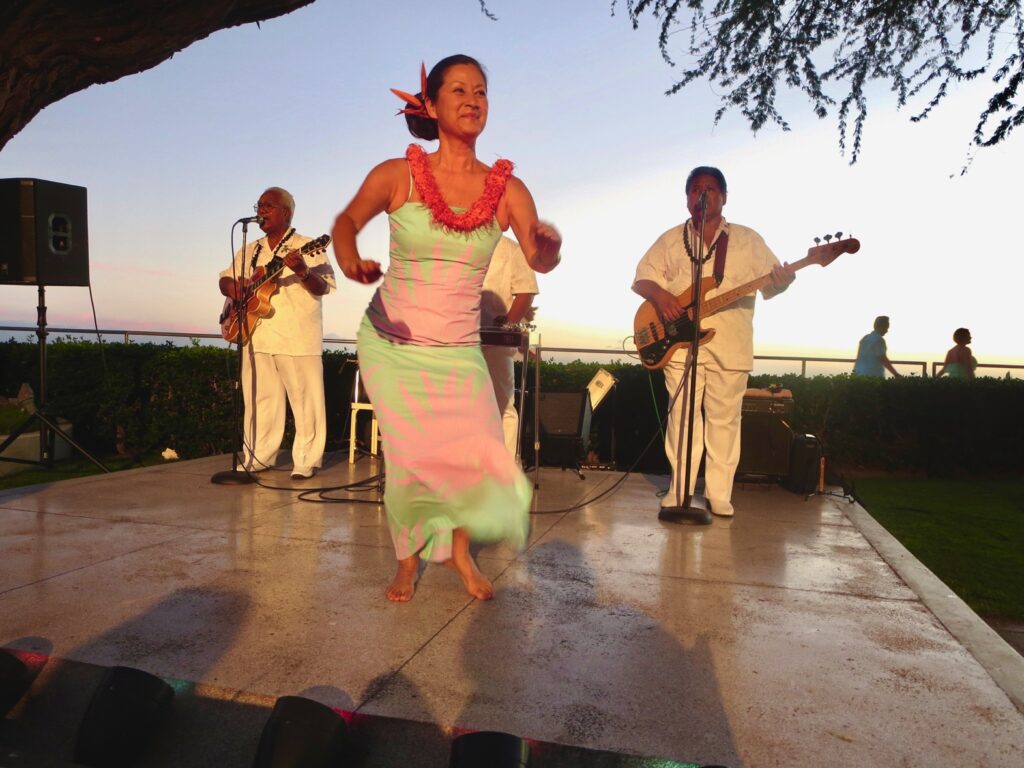
Kanoe eventually developed various outside projects. She and her husband produced the DVD Romantic Waikiki Hula. Doing performances to promote the DVD led to Kanoe putting together full scale shows that she took to Japan. She also began teaching classes in Japan, where hula is very popular, as well as in Hawaii. There was a digital magazine, Hula Studio. There were performances overseas. And there was always an eager audience waiting to see her at House Without a Key. Life was busy, and life was good.
And then came the pandemic.
Kanoe got the first hint of change in the air when she was in Japan in March 2020 to renew her artist visa, which had to be done in person. While in the country, she contacted her students about arranging a get together, but no one wanted to come, Prime Minister Shinzo Abe having announced that people shouldn’t be gathering. “So I got my visa and I just went right back home. And a week later, Halekulani’s general manager called me and said, ‘We’re closing this weekend, so you don’t have to come to work. And we don’t know when we’ll be open again.’” The April shows she had scheduled in Japan were cancelled. When Hawaii went into lockdown, her dance classes were cancelled as well. Suddenly, her every avenue of making a living was gone.
“Believe me, March and April were like, fear and desperation,” she says. “Then one of my students said to me, ‘Why don’t you try teaching on Zoom?’ And I said, ‘What is that?’” After getting up to speed on the latest technological developments, Kanoe and her husband decided to give “the Zoom thing” a try. Their living room was transformed into a dance studio, with a mirror, sound equipment, lighting equipment, iPhones, camera equipment, and a 70-inch TV, the couple’s very first television set. “We’d never owned a television; we always felt it was an ugly piece of furniture, and we just would read or listen to music. So the first time we had a TV screen in our house was like, ugh! But it was necessary.”
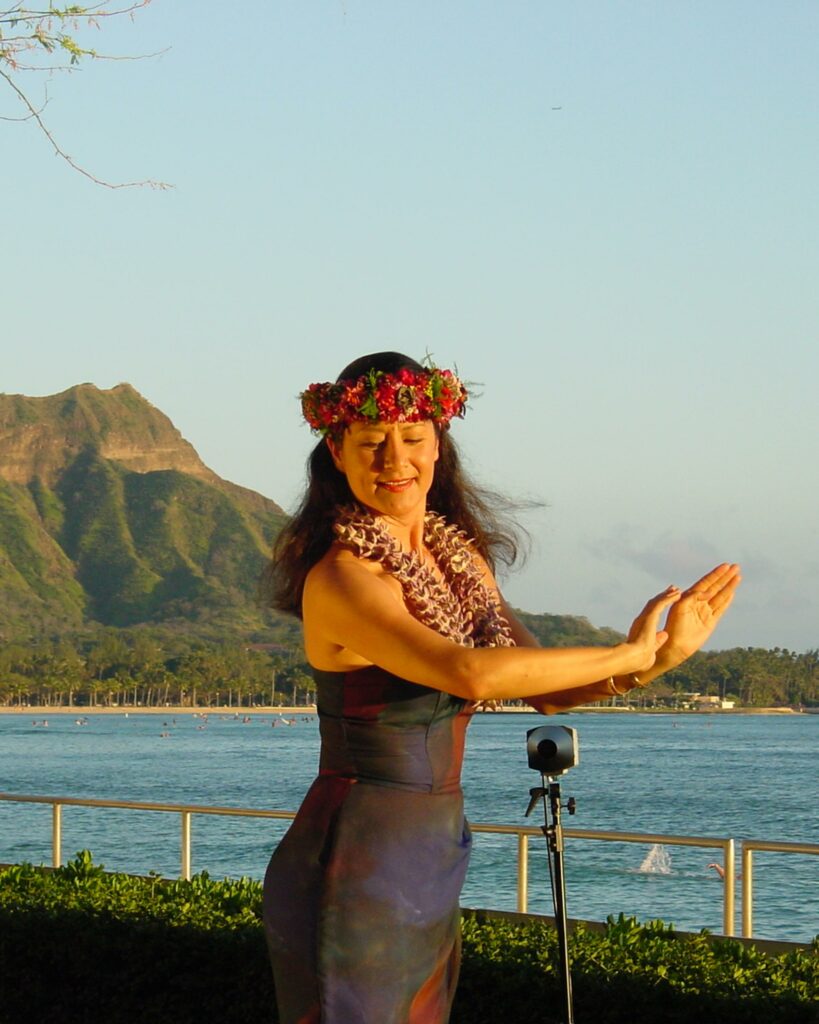
She quickly found students through advertising on social media. But teaching online gave Kanoe a steep learning curve. “The very first class made me so crazy because I was not used to seeing all these people on the screen going in different directions; it looks like everyone’s not on the beat. And that’s what I thought at first; ‘Wow, these people aren’t hearing the beat at all.’ Every single person, their hand was in different positions. What the hell is this?” By the time her first class was over, she was despondent. “I just thought ‘Oh, my God, this was a mistake. I can’t do this.’ I just rolled myself into a ball on the couch and cried. I did! I thought, ‘Geez, we just changed everything around to do this and we spent all this money. And I think it was a terrible mistake.’”
But once she realized it was the delays inherent in online streaming, which could be as long as seven seconds, that resulted in the seemingly off-beat dancing by her students, things began coming together. She also solicited advice from friends who had already been teaching or attending meetings online. “They said, ‘You need to just calm down and get used to it,’ and they gave me several suggestions. And it turned out to be a wonderful thing, because I was able to reach people all over the world. And of course, people during the pandemic needed something to do because they were stuck in their houses. How perfect. So it actually worked out good for me. I feel like I’m reaching an audience that would have loved to take hula, and now they can, you know? And I think this is the way of the world now and it’s going to go in this direction. So although I may lose some people once things open up, I think I can still continue to have online students.”
During the pandemic, Kanoe and her husband also worked on developing an online show, Hawaiian Rendezvous, patterned after the classic radio program Hawaii Calls (check out the first episode on Vimeo). And as restrictions began to relax in 2021, House Without a Key reopened last fall, bringing a welcome return of live Hawaiian music.
But since Kanoe first performed in Waikiki’s hotels in 1970s, there has been an erosion of Hawaiian music in the beachfront bars. “Yes, it has gone away,” she says. “And it’s not because of lack of talent, it’s because of lack of space. The music and the dance is not the focus; the focus is drinking and having a good time. It’s much easier to just put a musician or two in the corner, so the space for a stage is gone. And then where is the hula dancer going to dance? Well, sadly, right next to the table; it’s not classy and it doesn’t give focus to our culture. That’s why I feel so thankful to be at the Halekulani. And right next door [at the Outrigger Reef hotel] is the Kani Ka Pila Grille, and they have Hawaiian music too, thank God. It’s more backyard time, slack key, which I like; ours is a little more uptown, more elegant.”
Given her championing of Hawaiian music, it’s surprising that Kanoe has received flak from some in the hula world because she dances for tourists. “Isn’t that ironic?” she says. “I think about that. I used to get put down a lot. I still kind of do get put down by certain people. But on the other hand, I’m the one that’s out there trying to share what the hula is — not that the others wouldn’t. It’s just that, sadly, there’s no place for them. That’s what has to change.”
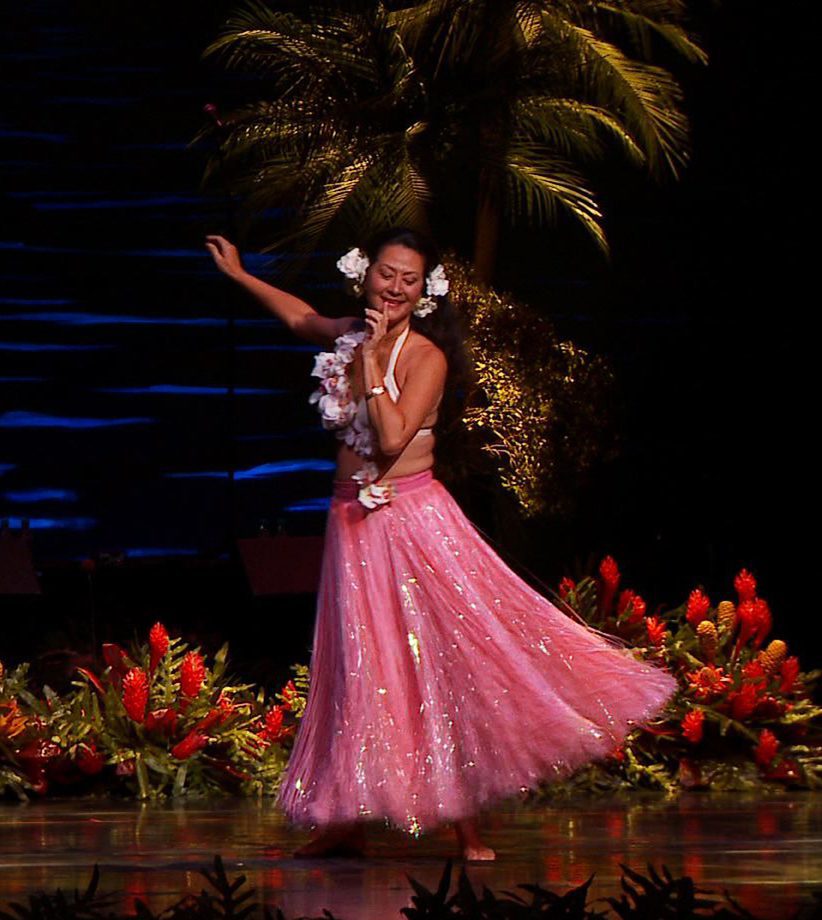
For Kanoe, dancing hula has always been about opening people’s eyes to the richness of Hawaiian culture. “Watching me dance is just the tip of the iceberg,” she says. “It’s just a tip of our culture. And if you want to study it, you can dive down real deep and learn more about it. But people who are here visiting for one week don’t have that kind of time. So I hope that people watching me dance get a sense of the spirit of this place, that they feel like, ‘Wow, that’s something really special, I can tell by the music and I can tell by the dance.’ That’s what I want them to feel.”
She continues, “When I perform the hula, I want the audience to get a sense of Hawaii; its spirit and its natural beauty, its history, and its character. And I want the audience to experience aloha. That they have felt aloha somehow, whether it’s through my dance or whether I spoke with them, or whether my musicians went up to their table and laughed with them. I want the people to get a sense that they felt aloha. That’s what’s important to me. And I guess that’s just the bottom line.”
Follow Kanoe Miller on Facebook for ongoing updates.

